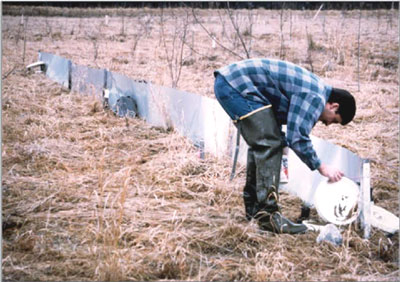A New Law to Protect Cattle
According to Wikipedia "drift fences were used in the Texas Panhandle from 1882 to 1887 to control cattle drift, the winter migration of livestock to warmer territory." In an effort to prevent cattle in Oklahoma, Colorado, and Kansas from crossing into the state during blizzards, Texas ranchers built a barbed wire drift fence that stretched for 200 miles with a gate every three miles.
The drift fence prevented cattle from migrating to better grazing land during the heavy snows of the 1886-87 winter. Most froze to death along the fence. It was removed in 1890 after passage of a law prohibiting fencing of public property.
A Changed Application
Drift fences are still in use today but the application has changed. The long continuous barriers are one of the most effective techniques to sample wildlife species in a particular area to learn such things as population density. Reptiles and amphibians, insects and small mammals are often the subjects studied. When the animals come upon the fence, they move along looking for an opening. Many can be captured in a single night, when many species are most active and hard to observe.
Strategy for Placement
Different materials are used to make the fences. They can be strategically placed in areas with different ecosystems where wildlife movement is most active. Depending on the location, metal flashing or silt fence might be used. Various types of traps, such as pitfall and funnel, are used along the fence to capture subjects. Hundreds can be collected in a single night.
Here's an excellent example, though a bit slithery:
Drift fence is an example of a type of fence that retains the original name while its application has changed over the years. Can you imagine an application that might serve your needs?








